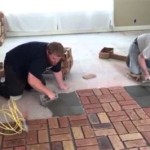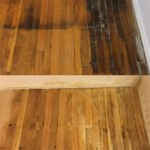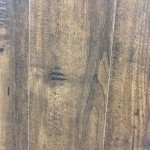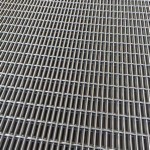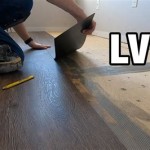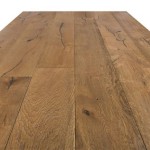Patching Compound for Vinyl Flooring: Essential Aspects
Vinyl flooring is a durable and affordable option for many homes, but even the toughest flooring can occasionally suffer from damage. Whether it's a small scratch or a larger hole, repairing vinyl flooring is essential to maintain its appearance and functionality.
One of the most important tools for repairing vinyl flooring is patching compound. This specialized material is designed to fill in and smooth out damaged areas, restoring the floor's original texture and color. Choosing the right patching compound and applying it correctly is crucial for a successful repair.
Types of Patching Compounds
There are two main types of patching compounds available: solvent-based and water-based.
- Solvent-based patching compounds are made with volatile organic compounds (VOCs) and are best suited for large or deep repairs. They dry quickly and create a strong bond, but they can release harmful fumes during application.
- Water-based patching compounds are less toxic than solvent-based compounds and are ideal for smaller repairs. They have a longer drying time but produce less odor.
For vinyl flooring, water-based patching compounds are typically the preferred choice due to their ease of application and lower VOC emissions.
Choosing the Right Patching Compound
When choosing a patching compound, it's important to consider the following factors:
- Type of damage: For minor scratches or small holes, a pre-mixed patching compound may be sufficient. For larger or deeper repairs, a more specialized compound may be required.
- Size of the repair: The size of the damaged area will determine the amount of patching compound needed. li>Color: Patching compounds come in a range of colors to match different vinyl flooring shades. Choose a color that closely matches the surrounding floor to ensure a seamless repair.
If you're unsure about which patching compound to use, it's advisable to consult with a flooring professional or the manufacturer of your vinyl flooring.
Applying Patching Compound
To properly apply patching compound to vinyl flooring, follow these steps:
- Clean the damaged area with a damp cloth to remove any dirt or debris.
- Lightly sand the edges of the damaged area to create a smooth transition.
- Stir the patching compound thoroughly until it reaches a smooth consistency.
- Using a putty knife or trowel, spread the patching compound over the damaged area, filling it completely.
- Smooth out the patching compound and feather the edges to blend it with the surrounding floor.
- Allow the patching compound to dry completely before walking on the repaired area. Drying time may vary depending on the type of compound used.
Once the patching compound is fully dry, you can restore the floor's protective finish by applying a sealant or wax specifically designed for vinyl flooring.
Conclusion
Patching compound is an essential tool for repairing vinyl flooring and restoring its original appearance and functionality. By choosing the right patching compound and applying it correctly, you can make repairs that are both durable and visually appealing. Remember to follow the instructions carefully and allow the patching compound to dry completely before using the repaired area.

How To Prepare A Concrete Floor For Vinyl Flooring Parrys

Repairing Vinyl Flooring Diy Family Handyman

Dap Flexible Floor Patch And Leveler 32 Oz Interior Gray Patching Compound In The Spackling Department At Com

Repairing Vinyl Flooring Diy Family Handyman

Dap Flexible Floor Patch And Leveler 32 Oz Interior Gray Patching Compound In The Spackling Department At Com

Planipatch Patching Compound Fast Setting Polymer 4 5 Kg Grey 1203205 Rona

Planipatch Patching Compound Fast Setting Polymer 4 5 Kg Grey Materiaux Pont Masson

Dap Flexible Floor Patch And Leveler 32 Oz Interior Gray Patching Compound In The Spackling Department At Com

How To Fill Hollow Spots Inside Vinyl Plank Flooring Lvp Laminate And Engineered Hardwood Floors Diy

Dap Flexible Floor Patch And Leveler

